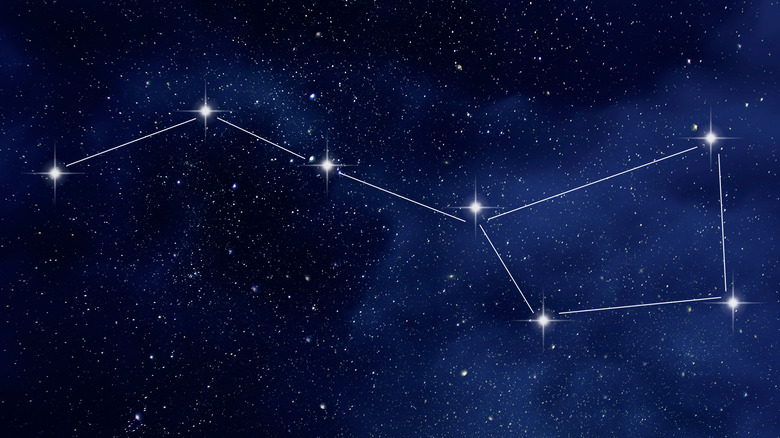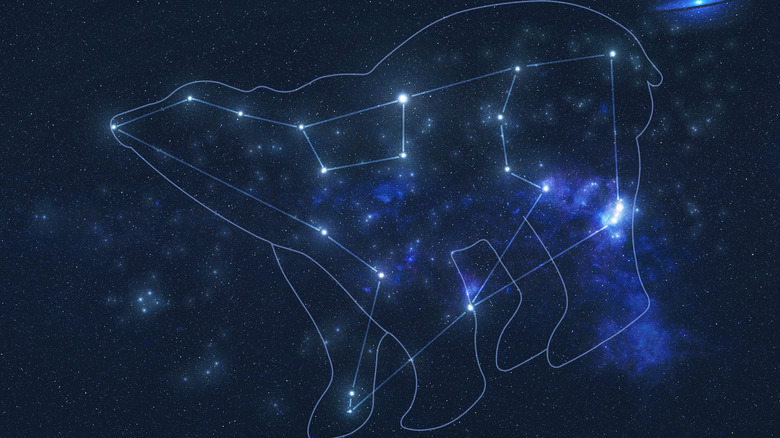The Mythology Of Callisto The Constellation Explained
You probably recognize the constellation pictured above; it's an iconic one, primarily composed of seven, super-bright stars. And yet, per Encyclopedia Britannica, this simple constellation is known by many names: the Wagon, the Plow, Septentriones, and many more in many other cultures. If you're American, you probably know it as the Big Dipper, a reference to the fact that the seven stars are arranged in a shape resembling a large serving ladle. To astronomers and science geeks, it's known as Ursa Major.
But, before Ursa Major had so many names, she was known simply by the name "Callisto." You read that right: The Big Dipper was once a person, according to Greek mythology, at least. But how did Callisto end up as a starry arrangement in the night sky?
Per Greeka, Callisto was the daughter of the king of Arcadia — a region in central Greece. Callisto's family were devoted followers of Artemis, the goddess of the hunt. As part of her devotion, Callisto promised Artemis that she would remain a virgin her whole life. Then along came Zeus. And if you know anything about Zeus, you can guess what happened next.
Callisto tried to remain faithful to her vow of chastity. Yet, Zeus made numerous attempts to seduce her and was ultimately successful, reports Greeka. After a brief affair, he left Callisto pregnant. Callisto attempted to conceal her pregnancy from Artemis, but that can be a hard thing to keep secret for very long. When Artemis found out the truth, she was enraged.
Callisto was turned into a bear
As punishment for breaking her vow, Greeka continues, Artemis turned Callisto into a bear and cursed her to spend her days roaming the woods. That certainly seems like a harsh sentence, given how difficult it is to say "no" to the sexual advances of the universe's most powerful god. Per Encyclopedia Britannica, other versions of the story say that Callisto was made into a bear by Hera, Zeus' angry wife, or by Zeus himself to conceal their secret affair. Whoever did it, the result was all the same.
Callisto (while in bear form) did still give birth to a baby boy. He was half human, half god, and 0% bear. He was given the name Arcas, meaning "born by a bear," and hidden away in Greece by his father Zeus. Arcas' origins were unknown to him, yet he still went on to become king of Arcadia, like his grandfather.
But one day, on a hunt, Arcas returned to the woods where he was born. He came across a bear, and — not knowing it was his own mother Callisto — he prepared to kill her with a javelin. But, in the instant before that could happen, Zeus intervened. He transformed Callisto into the constellation Ursa Major and Arcas into Ursa Minor.
Well, that's at least how the ancient Greeks explained the origins of Ursa Major, which they viewed as bear-shaped. That's also where the name comes from: "Ursa" means "bear" in Latin.

